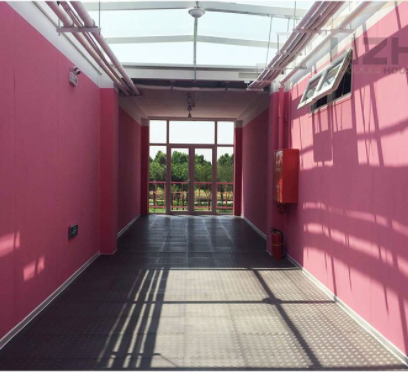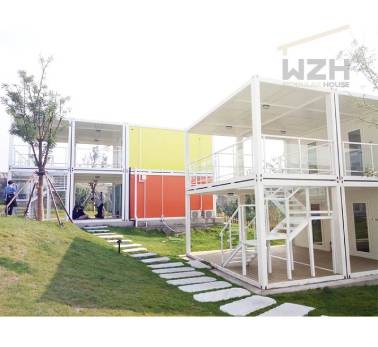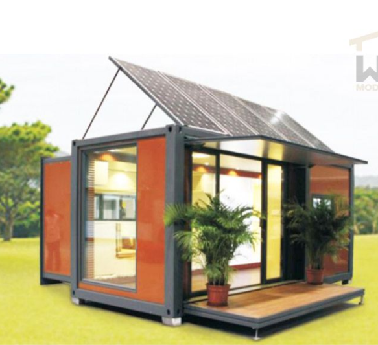With the growing popularity of container housing, are you hesitant to invest in a container house? Here are some questions and answers that may help you make a decision.
container house
The paints and finishes used on containers are industrial and used for ocean shipping, not residential, so they may contain lead and toxic pesticides.
Suburban and rural areas tend to be more open to containerized housing. Texas, California, Tennessee, Louisiana, Missouri, Oregon and Alaska are among the more progressive states that have opened their doors to containerized housing to some extent. Texas already has many container homes. California has been open to container homes and hybrid container homes, despite its reputation for red tape. Louisiana and Tennessee have experienced some of the most lenient and forward-thinking zoning regulations in the United States. As alternative living options continue to grow, it's only a matter of time before more states in the country start allowing container homes in designated areas.
Containers are very limited in size and plumbing, HVAC, insulation, and other systems are quickly consumed. The container is designed to fit on a train, which means it is narrow and ordinary furniture will not fit. It does not leave much headroom after insulation and wiring are installed.
There are several styles of roofs available for container houses, but flat roofs, pitched roofs, roof decks, and living roofs are the most common.
1) Flat roofs are the easiest, fastest, and least expensive to build, but require a slight slope to create a drain for rainwater, so maintenance costs are higher.
2) Pitched roofs are roofs that slope downward and are one of the most common roof types found in areas of intense rainfall and heavy snowfall. Popular examples of pitched roofs are hip walls, hips, slopes, pitched roofs, and pitched roofs.
3) Roof decks are creative flat spaces built on the roof to expand the occupiable or usable space. Many rooftop terraces are used for small outdoor gardens, dining areas, or recreational areas.
4) Living roofs are roofs that introduce plants and greenery. These roof types are both beautiful and natural and provide natural insulation and cooling.
container house
Since container houses are made of metal, they may rust. Some containers were originally manufactured with an alloy, a process often referred to as weathering steel or weatherproof steel, which helps to form a surface rust layer, thereby mitigating further corrosion. The climate in which the container is located can affect whether the container house will rust, as wet and dry climates affect containers differently.
Well-maintained container houses can retain their resale value just like traditional houses. They are relatively easy to resell because they can be loaded onto a truck and shipped almost anywhere. Before you buy, you may want to ask if the container home is made for your climate, and if not, ask about modifications you may need to make to make it suitable for its intended location.
Container homes should last at least 25 years but will last longer if well maintained or with siding to protect the exterior. Rust is the most common problem that can shorten the life of a container home. It is important to inspect the containers in your home and look for rust spots. Any problem areas should be treated and repaired to reduce the chance of rust spreading.
Are you interested in learning more about container homes? Feel free to contact us for expert advice.
 7 Things You Need to Consider before Buying and Building A Container House
In theory, building a shipping container home seems very simple. There are millions of redundant shipping containers in ports around the world, and they are the perfect size for a home. Unfortunately, things are never as easy as they seem at first. When b
7 Things You Need to Consider before Buying and Building A Container House
In theory, building a shipping container home seems very simple. There are millions of redundant shipping containers in ports around the world, and they are the perfect size for a home. Unfortunately, things are never as easy as they seem at first. When b
Sep. 15
 Container House: Advantages and Precautions
The container house is a construction system that once again hits the fashion trend. It can be moved anywhere and anytime to bring people a more convenient and comfortable life.
Container House: Advantages and Precautions
The container house is a construction system that once again hits the fashion trend. It can be moved anywhere and anytime to bring people a more convenient and comfortable life.
Apr. 10
 Sustainability and Insulation Retrofits for Container Homes
Container architecture is often labeled as a green, sustainable or environmentally friendly form of construction. By recycling these steel structures, the need for bricks, wood and other building materials is also reduced. This subsequently reduces the to
Sustainability and Insulation Retrofits for Container Homes
Container architecture is often labeled as a green, sustainable or environmentally friendly form of construction. By recycling these steel structures, the need for bricks, wood and other building materials is also reduced. This subsequently reduces the to
Mar. 24

WEIZHENGHENG Modular House Technology CO.,LTD provides various configurations of Flat Pack container houses. It can meet the needs of home living.
Copyright © Hebei Weizhengheng Modular House Technology Co., Ltd. All Rights Reserved |Sitemap